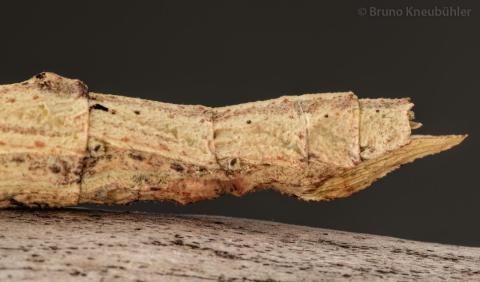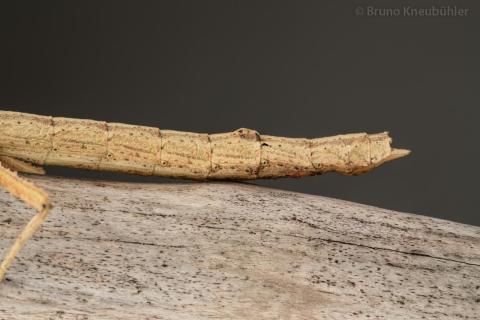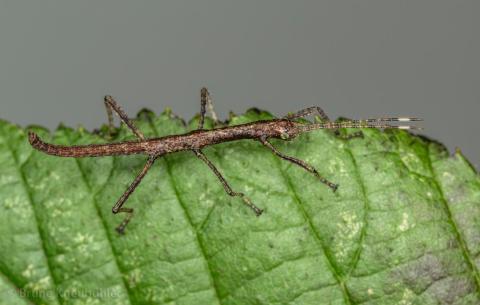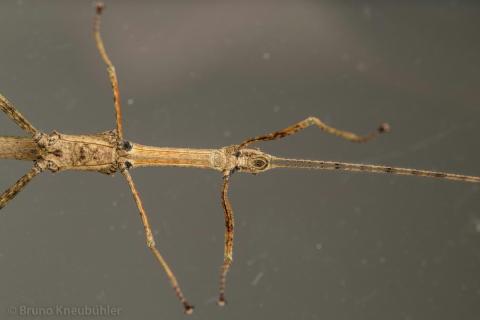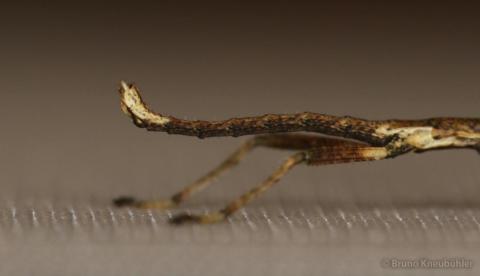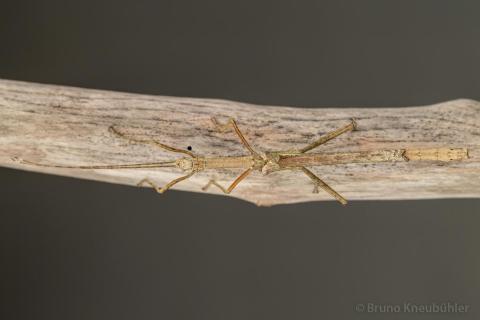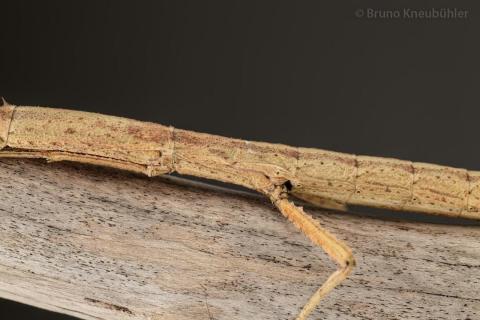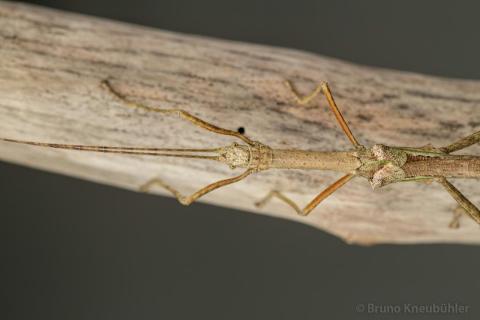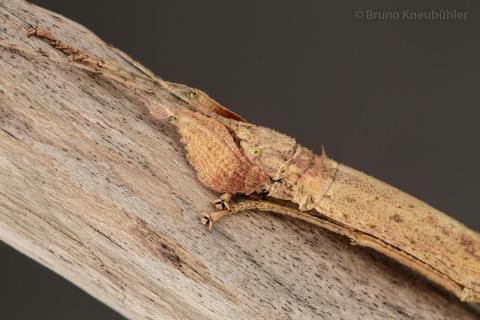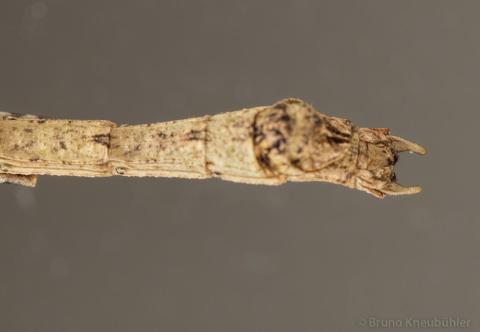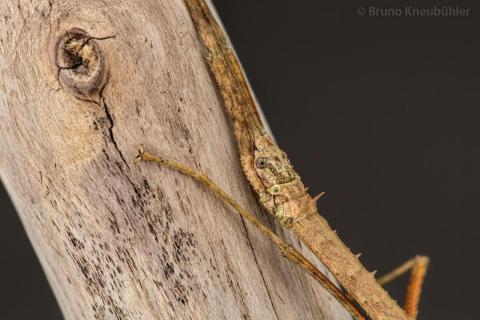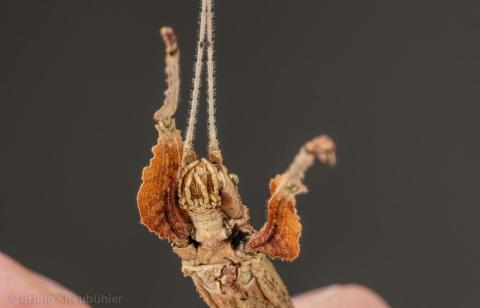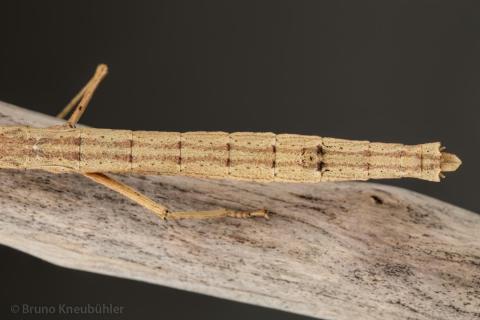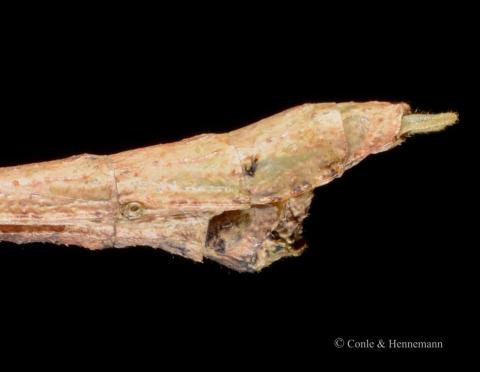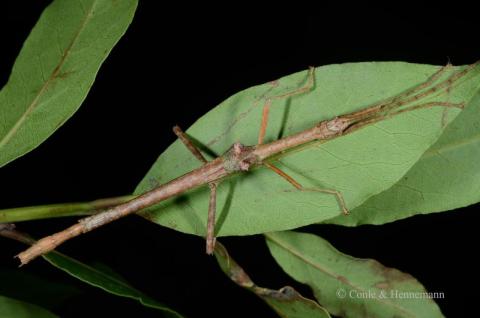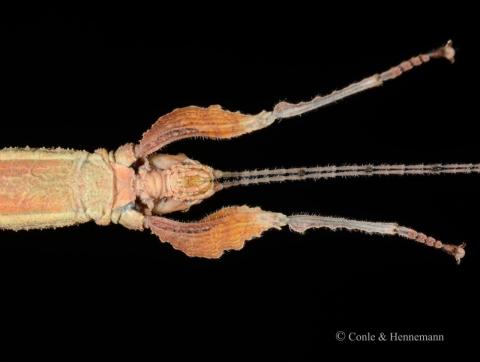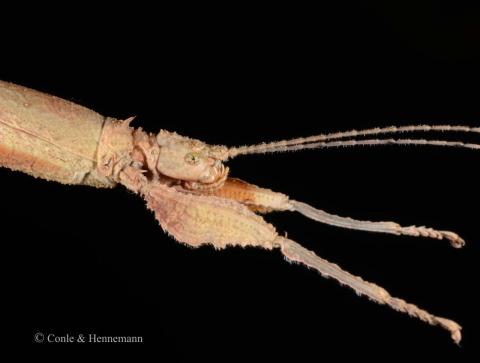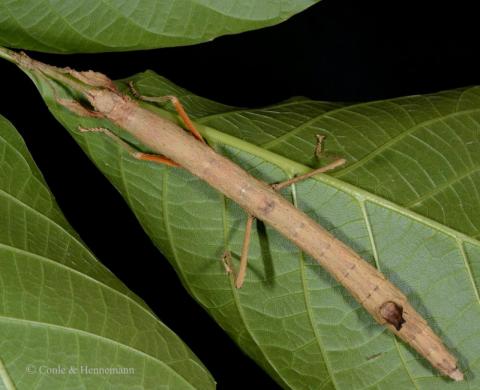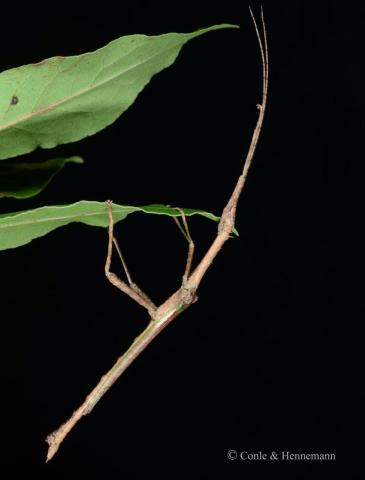
Genus
Stock
CLP
583
PSG
383
Culture status
In culture
Foodplants
Bramble (Rubus spp.)
Raspberry (Rubus idaeus)
Salal (Gaultheria shallon)
Piper sp.
Breeding notes
(by Bruno Kneubuehler)
Culture History
- 2013 - first successful culture by Bruno Kneubuehler
- 2013 - distributed to other breeders as Hesperophasmatini sp. „Samana“
- 2020 - the genus and species is described by Hennemann, Conle, Perez-Gelabert & Valero
_________________
Origin
- Samana peninsula (Dominican Republic)
_________________
Females
- rather stout phasmids
- about 10 – 11 cm long
- bark-like brown coloration
- inner side of thighs strongly orange colored
- cranial area of the coxae of fore and mid legs are black
- caudal area of the coxa of the hind legs is black
- 2 bigger and forward pointing spines on the caudal margin of the prothorax
- more small spines on the head and prothorax (dorsally)
- body surface granulated (especially dorsally)
- on the 6th abdominal segment (dorsally) there is a wart-like growth, which is individually more or less strongly pronounced. In some females this growth is hardly visible, while it is in others very pronounced - even a thread-like expansion
- hind wings are just very small rudiments
- very short fore legs
- thighs of the fore legs are very broad
- subgenital plate distinctly longer than the abdominal ending
- antenna much longer than fore legs
_________________
Males
- about 6 – 6.5 cm long
- bark-like brown coloration with few greenish areas on the wings
- body surface granulated
- inner side of thighs of fore and hind legs orange
- well developed hind wings
- anal region of the hindwings (the membranous part) is tesselated light-dark brown
- antennae longer than fore legs, with a white area at the tip
_________________
Nymphs
- about 16 mm (L1)
- dark brown (L1)
- rather stout
- dark antennae with a white area near the tip
- by L3 it is quite easy to draw a distinction between ♀♂ (by the naked eye)
_________________
Eggs
- about 4 x 2 mm
- brown mottled
- oval
- surface smooth and shiny
- distinct capitulum present on the operculum (lid)
- micropylar plate lance-shaped
_________________
Food Plants
- it is very much recommendede to cut away the edges of the leaves for nymphs in L1
- regularly change the plants and the water in which they stand
- bramble (Rubus spp.)
is very well accepted by nymphs and adults - raspberry (Rubus idaeus)
is well accepted by nymphs and adults (info Christian Bouladou-Dupre) - pepper plant (Piper sp.)
is well accepted by nymphs and adults (info Christian Bouladou-Dupre)
_________________
Behaviour
- nymphs as well as adult are passive during the day - and out and about feeding at night
- if being touched, nymphs and adults are passive and feign death
- a defensive spray has not been observed
- males can try to escape flying, though they do this rather seldom
- females fling the eggs away - with a swift swing of the abodmen
_________________
Developement
- incubation time (HH-incubation on slightly damp sand at 20 - 23 °C) is about 4 months
- spread some dried (!) moss over the eggs - this will make it much easier for the nymphs to hatch unscathed and it also reduces mould growth to some extend
- hatching ratio in F1 was very high (> 50%)
- males will be adult after about 4 months (at 20 – 23°C), females after about 4.5 – 5 months
- females start laying eggs after about 3 – 4 weeks
- about 10 – 15 eggs per female and week
- adults can live for several months
_________________
Breeding Notes
- my general notes on how to breed phasmids are an integral part of this care sheet …
- I stongly recommend to keep only one species per cage – the culture is much more likely to be successful than in an multi-species cage which are all too often badly overcrowed
- it is easy to breed this species
- for a succesful culture it is highly recommend to keep nymphs seperate from the adults. This makes it much easier to monitor their developement and they are protected from being disturbed or even harmed by the much bigger adults (like during their moults)
- keep the nymphs in a cage with good ventilation
- a humidity level of about 60+ % rH (for adults) and 75+ % rH (for nymphs) seems to be fine
- nymphs can be kept in a Faunabox (or similar cages like Faunarium)
- move nymphs to a bigger cage as they grow bigger
- a cage of at least 30 x 30 x 30 cm should be provided for 4 – 5 adult couples
- I have never sprayed nymphs, adults or their cage with water
- make sure that nymphs, which are about to undergo their adult moult, do not find places in the cage which would not offer them enough space beneath to moult successfully







